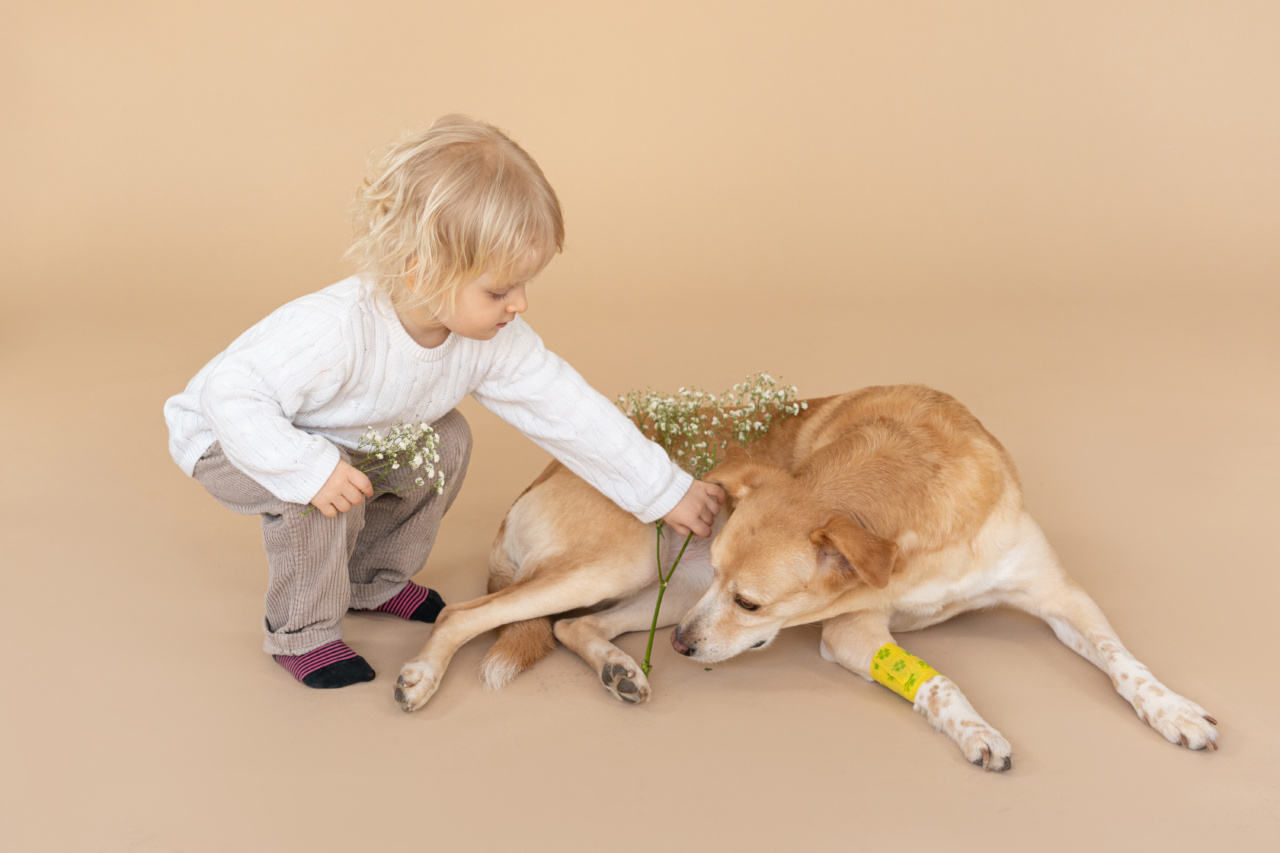Autism Spectrum Disorder (ASD) is a developmental disorder that affects communication, social interaction, and behavior.
It is estimated that around 1 in 54 children in the United States is diagnosed with ASD, making it a prevalent issue facing many families today. While there is no known cure for autism, various therapies and interventions have proven to be effective in improving the lives of children with ASD. One such intervention that has gained popularity is pet ownership.
Pets, such as dogs, cats, or even small animals like guinea pigs, have shown to provide numerous benefits for children with ASD. This article explores how pets can help children with Autism Spectrum Disorder and enhance their development and well-being.
1. Emotional Connection and Companionship
Children with ASD often struggle with forming emotional connections and building relationships with others. One of the exceptional qualities of pets is their ability to offer unconditional love and acceptance, creating a safe bond with the child.
Animals, whether a cat curling up beside the child or a dog wagging its tail in excitement, can provide companionship and a sense of belonging that may be challenging to establish with peers or family members.
2. Reduced Stress and Anxiety
Children with ASD commonly experience higher levels of stress and anxiety compared to their neurotypical peers. The presence of a pet, however, can significantly reduce these negative emotions.
Interacting with a pet has been found to lower levels of the stress hormone cortisol and increase the production of oxytocin, a hormone associated with feelings of happiness and relaxation. These calming effects can help children with ASD cope better in challenging situations and navigate through their daily lives with reduced anxiety.
3. Improved Social Skills
Social interaction is an area of difficulty for children with Autism Spectrum Disorder. Engaging with pets can serve as a stepping stone towards developing better social skills.
Pets can act as a bridge between the child and the outside world, promoting social interaction as the child learns to communicate, bond, and care for their furry companion. Taking on responsibilities such as feeding, grooming, or playing with a pet can enhance a child’s sense of empathy, responsibility, and cooperation.
4. Enhanced Communication
Communication challenges are a hallmark of Autism Spectrum Disorder. However, pets can provide a unique and judgment-free communication experience for children with ASD. Animals are excellent listeners and do not judge or criticize.
This non-verbal form of communication allows children with ASD to express themselves freely and practice their social skills without the fear of rejection or misunderstanding. Engaging in activities with pets, such as teaching them tricks or talking to them, can facilitate language development and overall communication abilities.
5. Regulation of Emotional States
Children with Autism Spectrum Disorder often struggle with emotional regulation. They may have difficulty identifying and managing their emotions appropriately.
The presence of a pet can act as a source of sensory comfort, providing a calming effect and helping the child regulate their emotional states. The rhythmic petting of a dog or the soft purring of a cat can have a soothing effect on the child’s sensory system, assisting in emotional self-regulation and reducing outbursts or meltdowns.
6. Increased Physical Activity
Engaging in physical activities is crucial for the overall well-being of any child.
However, children with Autism Spectrum Disorder may face challenges in participating in structured physical activities or sports due to coordination difficulties or sensory sensitivities. Having a pet, particularly a dog, can encourage regular physical exercise through activities like walking, running, or playing fetch.
These activities not only enhance the physical health of the child but also provide sensory input and help in fine-tuning motor skills.
7. Teaching Responsibility and Routine
Caring for a pet comes with responsibilities, including feeding, grooming, and maintaining their well-being. Children with ASD can benefit significantly from being involved in a routine centered around pet care.
By actively participating in these tasks, they can learn responsibility and develop essential life skills. Following a routine instills structure and predictability, which are highly beneficial for individuals with Autism Spectrum Disorder.
8. Facilitating Social Connections
The presence of a pet can serve as a conversation starter and facilitate social connections for children with ASD. Pets often attract positive attention and interaction from others, leading to increased opportunities for socialization.
Whether it’s a neighbor asking about the dog’s breed or a classmate showing interest in the cat, these interactions can help the child initiate conversations and form connections with their peers, fostering a sense of belonging and acceptance.
9. Sensory Regulation
Children with Autism Spectrum Disorder frequently experience sensory sensitivities, making it challenging for them to cope with certain sensory inputs.
The presence of a pet can assist in sensory regulation by allowing the child to engage in sensory-rich activities. For example, stroking a pet’s soft fur, feeling their warmth, or hearing their rhythmic purring can provide the child with sensory input that is soothing and helpful in modulating their sensory system.
10. Building Empathy and Emotional Understanding
Empathy and emotional understanding are vital skills that children with ASD can struggle to develop. Interacting with pets can help cultivate these skills by promoting emotional connection and understanding.
By caring for an animal and observing their emotions and behavior, children with ASD can learn to recognize and empathize with the emotions and needs of others, which can extend to building stronger relationships with their peers and family members.
Conclusion
Pets have a remarkable ability to positively impact the lives of children with Autism Spectrum Disorder.
By fostering emotional connections, reducing stress and anxiety, enhancing social skills and communication, regulating emotional states, promoting physical activity, teaching responsibility, facilitating social connections, assisting with sensory regulation, and building empathy, pets can become valuable companions and therapeutic tools for children on the spectrum. Introducing a pet into the life of a child with ASD requires careful consideration and preparation, but the potential benefits are immeasurable.
Pets have the power to transform the lives of children with Autism Spectrum Disorder, providing comfort, companionship, and a pathway to growth and development.































